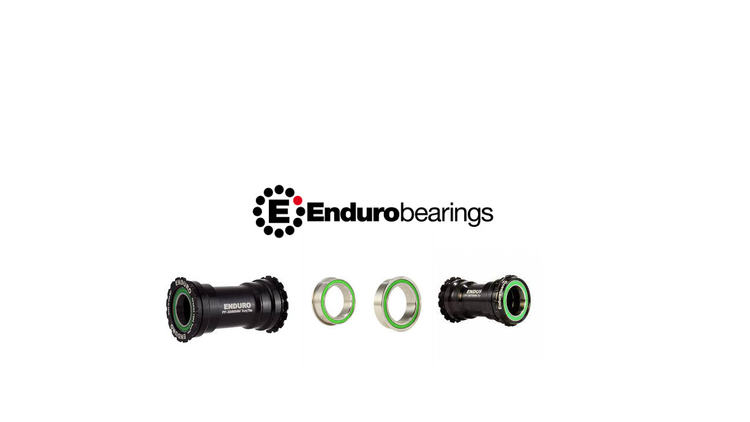Collection: Enduro Bearings
Enduro Bearings: born from a convergence of necessity, friendship, timing and, believe it or not, inspiration derived from a forklift.
Co-founder Matt Harvey was born in the East Bay, not too far from where Enduro Bearings is headquartered today. He spent his childhood finding creative ways to break BMX bikes and by age thirteen Matt was working in bike shops, learning how to fix not just his broken bikes but also how to repair and build every other kind of bicycle. This trajectory, along with a degree from San Francisco State, led him to product design work at Gary Fisher Bicycles, then White Industries, then Bianchi. Matt found himself involved in such notable projects as the Fisher RS-1 (one of the very first legitimate mountain bike full suspension designs), White Industries bottom brackets and hubs, and the radical fully suspended Bianchi race bike that Johann Museeuw piloted in the Paris-Roubaix cobbled classic.
By 1995, Matt had been neck-deep for several years designing suspension pivots, hubs and bottom brackets; long enough to have more than a few thoughts about the shortcomings of existing bicycle bearing technology.
Matt immediately realized the ginormous bearings he was designing – full of balls with no retainer ring – could be scaled down perfectly for some of the relatively slow spinning, high load demands found on bikes, and would result in dramatic improvements in reliability and lifespan. This led in short order to the first Enduro Max bicycle bearings. A new business was founded in the attic of Hydraulic Electro Forklift; one push-button phone, two Apple II computers, and a pile of bearing balls and steel bar stock.
Enduro bearings are fitted annually onto millions of bikes.
Over 25 years have passed since Matt and Mike founded Enduro, but their approach to business remains the same
To address the ever-changing needs of the cycling world, Enduro brings a lifetime of problem solving success to the table. Smooth rolling, efficient, long lasting, tailored for your specific needs; that’s Enduro Bearings.
The word “bearing” at its most simple definition is a machine element that allows one part to bear the weight or load of another. Bringing this definition more into focus with regard to bicycle use, a bearing constrains relative motion to motion in only a desired plane or direction, and at the same time reduces friction between moving parts. The loads that a bearing can be expected to bear are defined as follows:Radial Load is force applied directly on top of the outer bearing race, perpendicular to the shaft the inner bearing race is spinning on.Axial or Thrust Loads are similar and describe force applied to the side of a bearing, parallel to the shaft the inner bearing race is spinning on. Combined load testing best replicates real world bicycle use. Placing a 30 kilo weight beyond the crank spindle where pedal forces reside for one million cycles is an example of bottom bracket bearing axial load testing.

